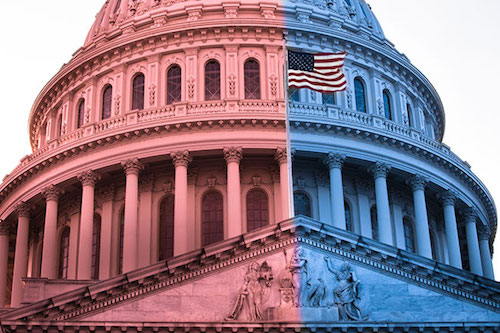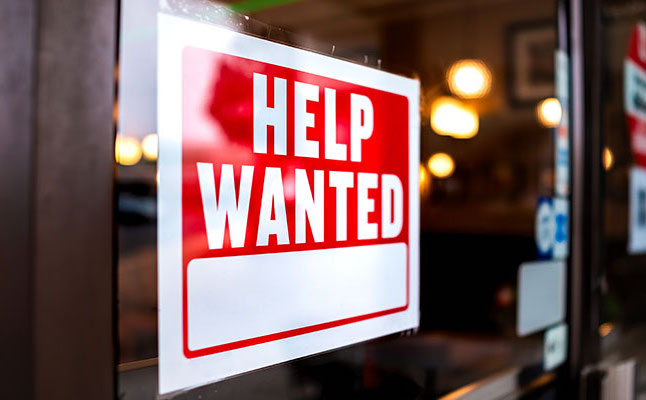Marketing research findings: employee, health insurance, consumer, sustainability, restaurant
••• employee research
Workloads impact worker well-being even more than COVID-19
As the pandemic closes out its second year, many businesses have had to work harder than ever to continue to be successful or regain losses. And this means that workers, who already bear personal stress from the pandemic, are continuing to grind in the strange new work world that has asked many employees to do more with less.
 A recent survey by the Conference Board reveals that 57% of workers say their mental health has degraded since the start of the pandemic. The driving factor behind this decline: their workload. In fact, work pressures are so great that half of respondents say work demands are taking a bigger toll on their mental health than COVID-19.
A recent survey by the Conference Board reveals that 57% of workers say their mental health has degraded since the start of the pandemic. The driving factor behind this decline: their workload. In fact, work pressures are so great that half of respondents say work demands are taking a bigger toll on their mental health than COVID-19.
What’s more, the survey reveals a stark gender divide. Women are disproportionately suffering from work-related pressures – at more than 1.5 times the rate of their male counterparts. This is likely due to the combined pressure of work and home life.
More than three quarters (77%) of respondents list concerns like stress and burnout as one of their biggest well-being challenges at work; that’s compared to a little over half (55%) reporting mental well-being concerns six months ago. Despite the long-lasting pandemic, concerns over mental health are nearly double those of physical health (77% vs. 40%). And substantially more women (82%) than men (68%) report mental health as their biggest concern.
Half of respondents (50%) report that “pressure related to workload” harmed their mental health. Women (56%) and Millennials (60%) report their mental health suffered from workload pressure compared to men (37%), Gen X (53%) and Baby Boomers (39%).
This difference is in part due to blurred boundaries between work and personal life, which were more frequently reported by women (48%) and Millennials (54%) than men (34%), Gen X (47%) and Baby Boomers (32%).
But worries over COVID-19 itself also persisted. Thirty-seven percent of overall respondents reported that fear of exposing loved ones to the virus substantially impacted their mental health, with Millennials (50%) leading this group followed by women (41%), Gen X (35%), Baby Boomers (33%) and men (29%).
Overall, more than half (57%) of respondents feel their mental health has deteriorated to some degree during the pandemic. More women (60%) report this deterioration of mental health than men (48%) and more Millennials (63%) report the same than their counterparts (Gen X, 59%; Baby Boomers, 47%). The mental health of Baby Boomers is the most unchanged, with 41% saying their mental health remained the same, followed by 29% of Gen X and 21% of Millennials.
Nearly half (49%) were able to keep up their regular physical health regimen during the pandemic, compared to only 30% who were able to keep up a regular mental health regimen. More than a quarter (28%) don’t have a regular mental health regimen, compared to those who lack a physical health regimen (4%).
So what can supervisors do to take care of the mental health of their employees? It’s clear they care but how far will they go to support them? Most respondents (75%) feel their supervisor genuinely cares about their well-being. But significantly fewer (only 55%) think their supervisor would change their workload to address their mental health concerns. Half of respondents (54%) feel that their organization’s initiatives to support their well-being were either not helpful (18%) or slightly helpful at best (36%).
What does help? Workers value support balancing their workload, staying social and being healthy. Some resources to support well-being were more available than others: programs that support emotional well-being (82%); online resources and tools on well-being (79%); formal policies that support work/life integration (78%); and programs for well-being education (74%).
Of those for whom it was available, “formal policies that support work/life integration” were considered the most effective, with half of respondents (50%) reporting them helpful. Also helpful were “activities for social wellness and belonging” (48%) and “incentives for healthy habits” (41%).
There are gender and generational differences in program usage and effectiveness, with women and Millennials currently taking advantage of formal policies that support work/life integration more than their counterparts: women (39%), men (30%), Millennials (46%), Gen X (38%) and Baby Boomers (27%).
Women and Millennials were also more likely to find these policies helpful, and women also found online resources more helpful than men (32% vs. 21%). Across generations, Baby Boomers found online resources more helpful than Millennials (26% vs. 21%) but Gen X were the most likely to find these helpful at 31%.
The survey was conducted by The Conference Board and surveyed 1,800 U.S. workers.
••• health insurance research
Communicating the benefits: Employers face challenges when using benefits vendors
Despite 93% of employers finding it important to be part of their employees’ long-term financial wellness through the health and retirement plans they offer, only half currently offer a high-deductible health plan (HDHP) option paired with an employer-sponsored health savings account (HSA) program.
Benefits education is an issue that impacts employees and employers alike. In a recent survey commissioned by HSA provider Bend Financial, 1,000 benefits decision makers at American employers ranging from two to 5,000+ employees were asked to describe their feelings about being part of their employees’ overall financial wellness, provide their thoughts on benefits vendors and test their current base of knowledge surrounding HSAs.
 Nearly half cited educating employees as their biggest challenge when using benefits vendors. Unsurprisingly, only one-third rated their current employee benefit communications as “excellent.” And confusion seems to especially loom around HSAs, with 56% not knowing an employee needs an HDHP to be eligible for an HSA and 50% not being aware an HSA stays with an employee even after they lose their job or insurance coverage.
Nearly half cited educating employees as their biggest challenge when using benefits vendors. Unsurprisingly, only one-third rated their current employee benefit communications as “excellent.” And confusion seems to especially loom around HSAs, with 56% not knowing an employee needs an HDHP to be eligible for an HSA and 50% not being aware an HSA stays with an employee even after they lose their job or insurance coverage.
Despite continued confusion surrounding HSAs, three-quarters of employers would still be likely to offer an HDHP option with an employer-sponsored HSA program if employees requested it.
When selecting health-related benefits vendors, employers prioritize cost (48%); user experience (44%); how well their tech works for/integrates with company systems/processes and other benefits already in place (40%); and how well their tech works for employees (35%).
Employers encounter a variety of challenges when using health-related benefits vendors, including educating employees (47%); educating HR/internal staff (35%); enrollment (35%); and initial integrations (29%).
When it comes to health savings accounts, employers were subject to a variety of misconceptions. Fifty-six percent didn’t know an employee needs an HDHP to be eligible for an HSA (56%). Fifty percent weren’t aware an HSA stays with an employee even after they lose their job or insurance coverage (50%) and 43% didn’t know HSAs can include investment options and be beneficial in saving for retirement.
The survey was commissioned by Bend Financial and polled 1,000 benefits decision makers at American employers ranging from two to 5,000+ employees.
••• consumer research
A brand’s politics might make or break a sale
 It’s hard to miss – we’ve become increasingly tuned into the political views of others and how those views do or don’t align with ours. But what implications might this have for companies who wish to attract consumers across the political spectrum? Digital.com surveyed 1,250 Americans ages 18 and older to gauge the influence of political and social issues on the purchasing process.
It’s hard to miss – we’ve become increasingly tuned into the political views of others and how those views do or don’t align with ours. But what implications might this have for companies who wish to attract consumers across the political spectrum? Digital.com surveyed 1,250 Americans ages 18 and older to gauge the influence of political and social issues on the purchasing process.
Overall, 47% of Americans say they are unlikely to patronize a business with opposing political views. Forty-nine percent of independent voters, who don’t necessarily align with one of the country’s dominant political parties, are unlikely to patronize businesses with opposing political leanings. Sentiment among Democrats and Republicans isn’t far behind. Forty-six percent of Democrats and 45% of Republicans say they are unlikely to purchase products or services from businesses that have political views that do not match their own.
When asked why they pay attention to a company’s political and social views, the plurality of Democrats (34%) and independent voters (28%) say it’s because they want their money to have an impact beyond their purchase. Meanwhile, 26% of Republicans say it’s because they don’t want their money supporting candidates or causes with whom they disagree.
A company’s political leanings are more likely to influence women than men. Fifty-three percent of women say they are unlikely to buy from a company with a different political view, compared to 38% of men. Women are split on why a company’s political and social stances are meaningful to them. Twenty-nine percent say it is because they don’t want their money being funneled to causes or candidates they do not support, while another 29% want their money to have an impact beyond their purchase. This reason was also cited by 28% of men as to why they consider these factors when choosing which companies to patronize.
Generational differences arose in the survey results as well. Fifty-two percent of people 55 and older and 48% of people ages 25-34 aren’t likely to buy from a company with a different political alignment. By comparison, 46% of 35-44-year-olds, 44% of 45-54-year-olds and 41% of 18-24-year-olds feel the same way.
Excluding Americans ages 55 and older, the main reason respondents gave for considering a company’s political and social stances is that they want their money to have an impact beyond their purchase. The plurality of Baby Boomers (34%) don’t want their money going to support candidates or causes they oppose.
A slightly smaller percentage of U.S. shoppers, 45%, are unlikely to purchase products or services from companies that don’t have a stated sustainability policy. Fifty-five percent of respondents ages 18-24 say they’re unlikely to buy from a company that doesn’t have a published sustainability policy. Among other age groups, the likelihood that they would not buy from a company without a stated sustainability policy ranges from 41% (25-34-year-olds) to 47% (45-54-year-olds).
When looked at through the political lens, the survey found 49% of Democrats and 43% of independent voters are unlikely to buy from companies without sustainability policies, compared to 39% of Republicans.
Men and women are aligned in their feelings about the need for sustainability policies. Forty-nine percent of both genders say they are unlikely to patronize a business if it doesn’t have a stated sustainability policy.
Lastly, the survey found that among all U.S. shoppers, 40% are unlikely to buy from businesses without stated diversity, equity and inclusion (DEI) policies. Women are less likely to patronize a business without stated DEI policies. Forty-four percent of women are unlikely to buy products or services from a business without DEI policies, compared to 34% of men. Among ethnic minorities, 50% of Hispanic/Latino respondents say they’re unlikely to buy products or services from a company if it doesn’t have stated DEI policies, compared to Asian (43%), Black (40%) and white (38%) respondents.
The survey was conducted on behalf of Digital.com by Pollfish and polled 1,250 American adults on July 21, 2021.
••• sustainability research
New consumer expectations: Teens look to businesses to tackle climate change
 Teens have no problem putting pressure on companies to make necessary change in the world and this is particularly true when it comes to climate change. According to a survey of 1,006 teens conducted for Junior Achievement by ENGINE Insights, most teens (73%) agree that business innovation will be required to slow or stop global warming and climate change. However, only a third (33%) believe it is businesses’ responsibility compared to “all of us as individuals” (69%). A slight majority (52%) agree that businesses act more responsibly toward the environment today than they have in the past.
Teens have no problem putting pressure on companies to make necessary change in the world and this is particularly true when it comes to climate change. According to a survey of 1,006 teens conducted for Junior Achievement by ENGINE Insights, most teens (73%) agree that business innovation will be required to slow or stop global warming and climate change. However, only a third (33%) believe it is businesses’ responsibility compared to “all of us as individuals” (69%). A slight majority (52%) agree that businesses act more responsibly toward the environment today than they have in the past.
Most teens (75%) believe global warming and climate change are happening as the result of human activity, while far fewer (10%) believe they are happening but not as the result of human activity. A small percentage (3%) say global warming and climate change aren’t happening at all. Sixty-five percent of teens agree that they are worried about the impact of global warming and climate change on their future quality of life.
The survey was conducted by ENGINE Insights on behalf of Junior Achievement and surveyed 1,006 13-17-year-olds from September 21-26, 2021.
••• restaurant research
Hungry for help: Restaurants still lack critical employee numbers
Although the restaurant industry added back many of the jobs lost during the early months of the pandemic, a majority of restaurants remain understaffed. In a September 2021 survey fielded by the National Restaurant Association, 78% of operators said their restaurant did not have enough employees to support existing customer demand. Restaurants continued to have difficulties boosting staffing levels in September, as job growth slowed significantly from recent months. Eating and drinking places added a net 29,000 jobs in September on a seasonally adjusted basis, according to preliminary data from the Bureau of Labor Statistics.

September’s modest gain followed a revised decline of 24,700 jobs in August, which means overall employment levels were essentially unchanged between July and September. The last two months represented a sharp deceleration from the average monthly gains of nearly 200,000 jobs during the first seven months of 2021. As a result, eating and drinking places remained more than 900,000 jobs below pre-pandemic staffing levels.
A solid majority of both full-service operators (81%) and limited-service operators (75%) said their restaurant did not have enough employees to meet customer demand in September. For most restaurants, staffing was significantly below necessary levels. Among restaurants that were understaffed in September, 83% of operators said their restaurant was more than 10% below necessary staffing levels. Thirty-nine percent of understaffed operators were more than 20% below necessary staffing levels. Thirty-seven percent of understaffed full-service operators and 43% of understaffed limited-service operators said their restaurant was more than 20% below necessary staffing levels in September.
As a result of being understaffed, 68% of operators say their restaurant reduced hours of operation on days that it is open for business. Forty-six percent of operators cut back on menu items, while 45% closed their restaurant on days that it would normally be open. Forty-four percent say they reduced seating capacity as a result of being understaffed. These practices were much more common in the full-service segment, with a majority of understaffed full-service operators saying they took each of these four actions in recent months.
The National Restaurant Association surveyed 4,000 restaurant operators during September 2021.
